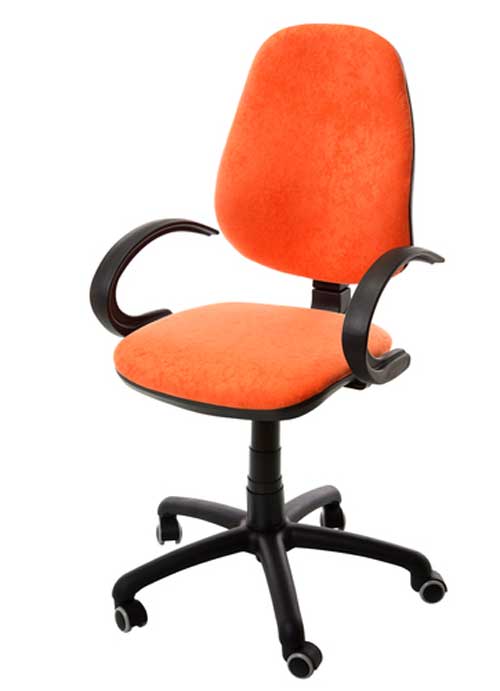
As our society embraces the technology of the Internet, one thing is becoming clear: all those hours in front of the computer can be detrimental to health. We tend to be fussy about our sleeping mattresses and television lounge chairs but often give insufficient thought to selecting the right computer chair for comfort and health.
Sitting for long periods (even in the finest chair) hampers circulation in the lower body, but an ill-fitting chair adds extra problems with posture, neck strain, and lower back pain.
Are you looking for a home computer chair that doesn’t leave you stiff and sore? Here are some important factors to consider:
1. Your chair should have armrests, positioned at a level that lightly supports your forearms. This takes some strain off your shoulders and upper spine. Armrests shouldn’t interfere with your ability to slide the chair as close to the desk as needed for maximum comfort. If your armrests bump against the table edge, you may not be able to sit back in your chair properly; this will stress the lumbar discs in your lower back. With the chair pulled in tight and your hands resting comfortably on the keyboard, your upper arms should be parallel with your spine, and elbows at a 90-degree angle.
2. Adjust the chair height so your forearms are parallel with the desktop. If the keyboard is too high, your shoulders and neck will feel ‘pinched’ in the effort of keeping your hands up. Adjust your computer monitor’s height so you don’t have to tilt your head down to view it comfortably. When sitting, keep your shoulders straight and your back placed firmly against the back of the chair for support.
3. With your lower back firmly against the backrest, there should be an inch or so of space between the front edge of the chair and the back of your knees. If necessary, adjust the backrest forward or add a lumbar pillow to achieve this. Having the backs of your knees jammed up against the chair edge restricts blood flow through the legs.
4. When your chair is adjusted to the right height, your feet should rest firmly on the floor. If your heels aren’t quite reaching, lower your chair and use a lower desk. Use an adjustable footrest if you find it helps. If you have long legs, you may need to raise the chair slightly to achieve a firmer fit under your thighs.
5. A quality lower back support is the most important feature to look for in a computer chair. Without it, it’s difficult to maintain good posture. Even worse is having great back support and not using it: when stressed or concentrating hard, we tend to hunch forward without even being aware of it, thereby undoing all the great benefits of having the perfect chair!
And remember, the healthiest way to use your computer chair is to get out of it and move around as often as you can and do a Cathe workout video.
Related Articles By Cathe:
Shoulder Shrugs Don’t Get the Attention They Deserve & Why You Need Them
Improve Your Health by Standing at Work

